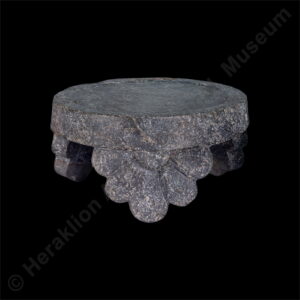
A utensil of clay or, more rarely, plaster, consisting of a concave tray, usually supported on three low legs. These objects are found in various sizes and are interpreted as vessels for offerings to the deity or portable hearths. Stone offering tables serve the same purpose. These are often rectangular, without legs, while some bear an incised Linear A inscription known as a “libation formula”, probably of religious and/or ritual significance. Offering tables have been found in palatial and domestic assemblages, as well as cult places such as peak sanctuaries and caves. They are mainly dated to the Neopalatial period (1700-1450 BC).